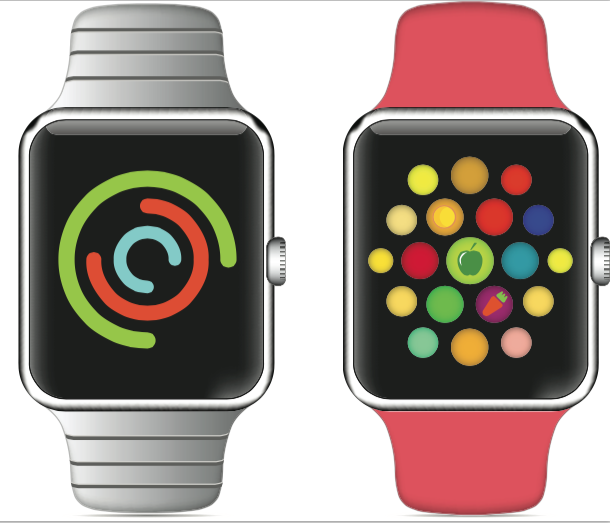Taking stock of the smartwatch market: more wait and see for publishers?
Incredible as it might seem the Apple Watch has been a product for just over year.
After months of speculation and rumour the company CEO Tim Cook finally confirmed the existence of the watch in September 2014. It then took Apple seven months to get the watch to market, and it has now been on sale for just over six months.
Yet the smartwatch market isn’t solely about the American brand, writes DIS contributor Chris Price. Sure the company quickly assumed number one position in the market. However pretty much every consumer electronics brand has a smartwatch in some format, including the likes of Pebble.
Overall the penetration of smartwatches in 2015 is predicted to be around 25 million units. To put that in some perspective that’s four times more than 2014, which finished with sales of 6.8 million.
And while the sales of smartwatches have been surging, it is short of some analysts’ expectations.
In the meantime publishers have continued to wrestle with an uneasy feeling about this new emerging platform. Very few have so far taken that leap.
Now then seems like a good time to take stock and see where the smartwatch market currently is, and what that may translate into for publishers.
Apple is clear market leader
From the moment the watch was announced only a fool would bet against Apple becoming the major player in the smartwatch market in 2015. And so it has proved to be true. There are no clear figures for sales of the watch, but estimates for the first quarter sales are around 3.6 million units. That is way ahead of the competition, but clearly a long way short of the 40 million sales for 2015 that some more optimistic analysts had predicted.
Just like the debut iPhone and iPad reviews for the Apple Watch have been mixed. Its clever interface and elegant design have been widely praised. However there are many who have pointed to its poor battery life and its high price as the barriers as to why it hasn’t achieved higher sales. As has been the case with Apple devices several times before, it could be the second or even the third iteration that turns the Apple Watch into a mass-market proposition.
Nevertheless chances are that that if a media brand is developing an app for smartwatches today, it will be for Apple’s watchOS platform.
Confusion over formats
In the smartphone market although Apple’s iOS platform lead the way it was quickly overtaken by Android from its great rival Google. Might history be about to repeat itself in the smartwatch market? So far a significant number of consumer electronics companies have signed up to the Android Wear platform. And slowly, but surely the standard of the watches, and the platform they are built on, has been improving.
Most significantly there has been the unveiling of Android Wear watches boasting something of a wow factor, that are cheaper than their great rival from Apple. The latest Motorola 360 and the Huawei Watch, which debuted in the last month, have both been very impressive in terms of their stunning circular face, ease of use and improved battery management systems.
In theory if Android Wear did emerge as the key alternative to watchOS then it would make publishers lives easier in the way that for smartphones they only tend to only create apps for iOS and Android.
Unfortunately for Google though there are two other platforms that are taken a significant chunk of the smartwatch market.
Pebble, which debuted a Kickstarter project in 2012, gained significant praise for its series of smartwatches, the latest of which, the Pebble Time, has some interesting features. The company can count on a rabidly loyal squad of developers who have created many thousands of apps for the watch.
To complicate things further the Korean giant Samsung have in the smartwatch arena chosen not to go the Android route for its flagship watches. Instead the Samsung Gear S2, which some reviewers believe is the most sophisticated and impressive smartwatch so far (due to its clever digital crown controlled interface) sports another operating system called Tizen.
Lack of content innovation
In theory then anyone creating an app for a watch would have to cover four bases. Given Apple’s significant lead and the fragmentation of its rivals not surprisingly very few media style apps have been created for the other formats. Publishers, quite understandably, seem to be taking the wait and see approach.
There are around a dozen or so news apps for Apple Watch owners to try (including The Guardian, BBC and CNN) but ultimately most only offer smartwatch owners basic notifications of the top stories. Given that for most users - according to this research, rate notification as key this is not too surprising.
Almost all the apps deliver a headline via a notification and then let the user read at least a part of the story. Generally if they want a deeper view of the content they are directed back to their phone. There are also a few interesting utility apps emerging such as Nuzzel which serves up stories that a person friends are reading on social media.
While Apple users have a choice of news sources, things are different on the other platforms. The Guardian has tweaked its app to work on Android Wear and CNN is one of the major apps available to Samsung/Tizen watch owners, but there’s very little yet available on other platforms.
Most of the more imaginative Apple Watch apps have indeed come from brands who are largely offering utilities to users. Straddling the line between media and utility, for example, is the Berlin issue of the travel magazine GEO Saison, from the German publisher Gruner + Jahr. The app delivers location-based information about shops, restaurants, points of interest and more, and includes navigation.
What might the future hold?
The real innovation on smartwatch from a publishing perspective is likely to only really occur when two things happen. Firstly sales of smartwatches reaches a point whereby the creation of apps becomes credible. Secondly new features are added to smartwatches which create opportunities for publishers.
One new feature, which was added to the Apple Watch with the watchOS 2.0 upgrade a few months ago, is video playback. It is quite easy to imagine a media group like NowThisNews creating a potent mixture of notifications and short form video which would be optimised for the watch's small screens.
On board 3/4G might be another feature that speeds up innovation. At the moment smartwatches are tethered by Bluetooth, or used via wi-fi. By adding 3/4G facilities users would be able to take watches anywhere and still have access to its facilities without having to carry round a smartphone.
Some analysts believe that key for smartwatches are based around the type of things that Google is working on with its Google Now project. The idea being that the notifications are delivered in a timely way to help the watch owner run their lives. This could in theory include delivering content notifications about a specific topic that the person is interested in. In fact when the Apple Watch was launched CEO Tim Cook famously described it as “the most personal Apple device we’ve ever created” so it is clear that this is an area Apple is taking very seriously.
Apple has also been slow to help developers realise the potential of the new platform. It was only when watchOS 2.0 debuted a few months ago that companies were able to produce native apps for the watch which could access its key features.
Where's the money?
Ultimately though a slew of innovative apps that look great on a smartwatch is one thing. Actually monetising them is another. At the moment most of the traditional revenue sources for phones and tablets like display, and arguably native advertising, won't actually work on the watches. It really is down to publishers to conjure up creative ways of presenting content on the watch, but also to work out how that content can be surrounded by branded messages, which enable the publisher to monetise it.
Realistically we are at the start of a journey with smartwatches.
Publishers have probably been right to adopt the wait and see approach, however, we are sure to see some interesting innovation in this space next year.
* The Digital Innovators’ Summit takes place from 20-22 March 2016. <link no_cache dis-register>Book now to take advantage of the pre-agenda, discounted offer (saving at least €800 on final delegate rates) – ending soon.





